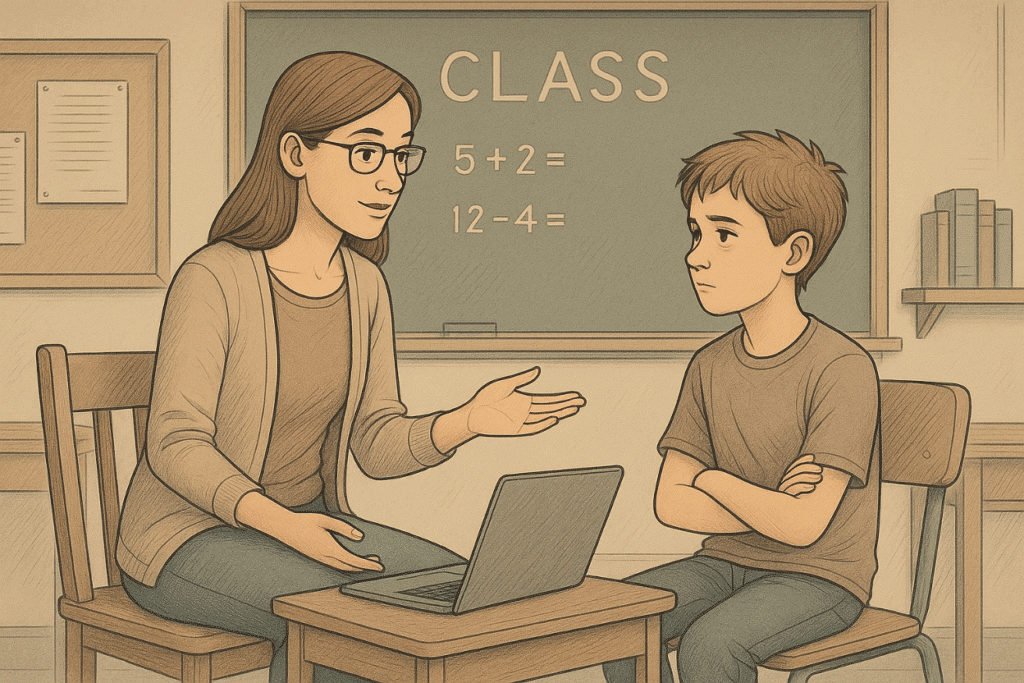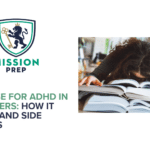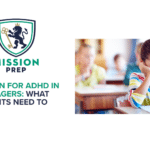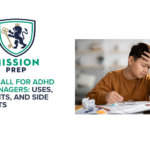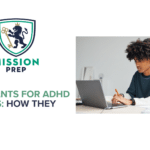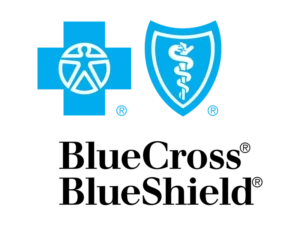Key Takeaways
- Creating a structured classroom environment with clear routines reduces anxiety and improves focus for students with ADHD.
- Breaking assignments into smaller, manageable chunks helps ADHD students complete work without feeling overwhelmed.
- Incorporating strategic movement breaks throughout the day can significantly improve attention and learning retention.
- Multi-sensory teaching approaches engage more neural pathways, making learning more accessible for students with ADHD.
- Mission Prep Healthcare offers specialized teen mental health treatment for ADHD through behavioral therapy, group counseling, emotional regulation training, and comprehensive family support in structured environments designed to help teens develop healthier coping skills.
Why Students With ADHD Need Support
Students with ADHD face unique neurological challenges that significantly impact their ability to succeed in traditional educational environments. ADHD affects executive functioning skills like attention regulation, working memory, and impulse control, making it difficult for students to focus during classes, complete assignments on time, or organize their materials effectively.
Without proper support, these students often experience academic underachievement despite having normal or above-average intelligence. They may struggle with following multi-step instructions, sitting still during long classes, or managing the social dynamics of group work. This can lead to decreased self-esteem, increased anxiety, and a cycle of academic frustration.
When students with ADHD receive targeted interventions such as structured routines, clear expectations, and frequent feedback, they can demonstrate their true academic potential. Early and consistent support improves academic outcomes and helps students develop coping strategies and self-advocacy skills they’ll need throughout their lives.
Mission Prep Healthcare specializes in mental health treatment for teens aged 12-17, offering residential and outpatient programs for anxiety, depression, trauma, and mood disorders. Our therapies include CBT, DBT, EMDR, and TMS, tailored to each adolescent’s needs.
With a structured, supportive environment, we integrate academic support and family involvement to promote lasting recovery. Our goal is to help teens build resilience and regain confidence in their future.
5 Ways Teachers Can Help Students with ADHD
1. Create a Structured Learning Environment
Structure is the scaffolding that helps ADHD students manage their school day successfully.
Without clear parameters and predictable routines, students with attention challenges often experience heightened anxiety and diminished focus.
Creating a structured environment can provide the framework these students need to thrive.
Set Clear Rules and Routines
Students with ADHD benefit tremendously from knowing exactly what to expect. Post visual schedules that outline the day’s activities, making transitions between subjects more predictable.
Consider using color-coding systems to help students quickly identify materials for different subjects. Routines need to be explicitly taught and practiced, what seems obvious to others may not be clear to students with ADHD.
Strategic Classroom Seating
Where a student sits can dramatically impact their ability to focus. Position students with ADHD away from high-traffic areas like doorways, pencil sharpeners, or windows where outside movement might catch their attention.
Placing these students near your teaching position allows for subtle redirection and encouragement without drawing attention to them.
2. Break Tasks Into Manageable Chunks
The prospect of completing a multi-step project or lengthy assignment can be overwhelming for students with ADHD, often triggering avoidance behaviors.
By breaking tasks into smaller, clearly defined steps, you transform seemingly insurmountable challenges into achievable goals.
This approach builds confidence and develops executive functioning skills that students with ADHD often struggle to develop independently.
Step-by-Step Instructions
For students with ADHD, processing multiple instructions simultaneously can be challenging. When giving directions, break them down into clear, sequential steps rather than delivering all instructions at once.
Consider providing these instructions both verbally and visually, giving students multiple ways to process the information.
Using Checklists and Visual Guides
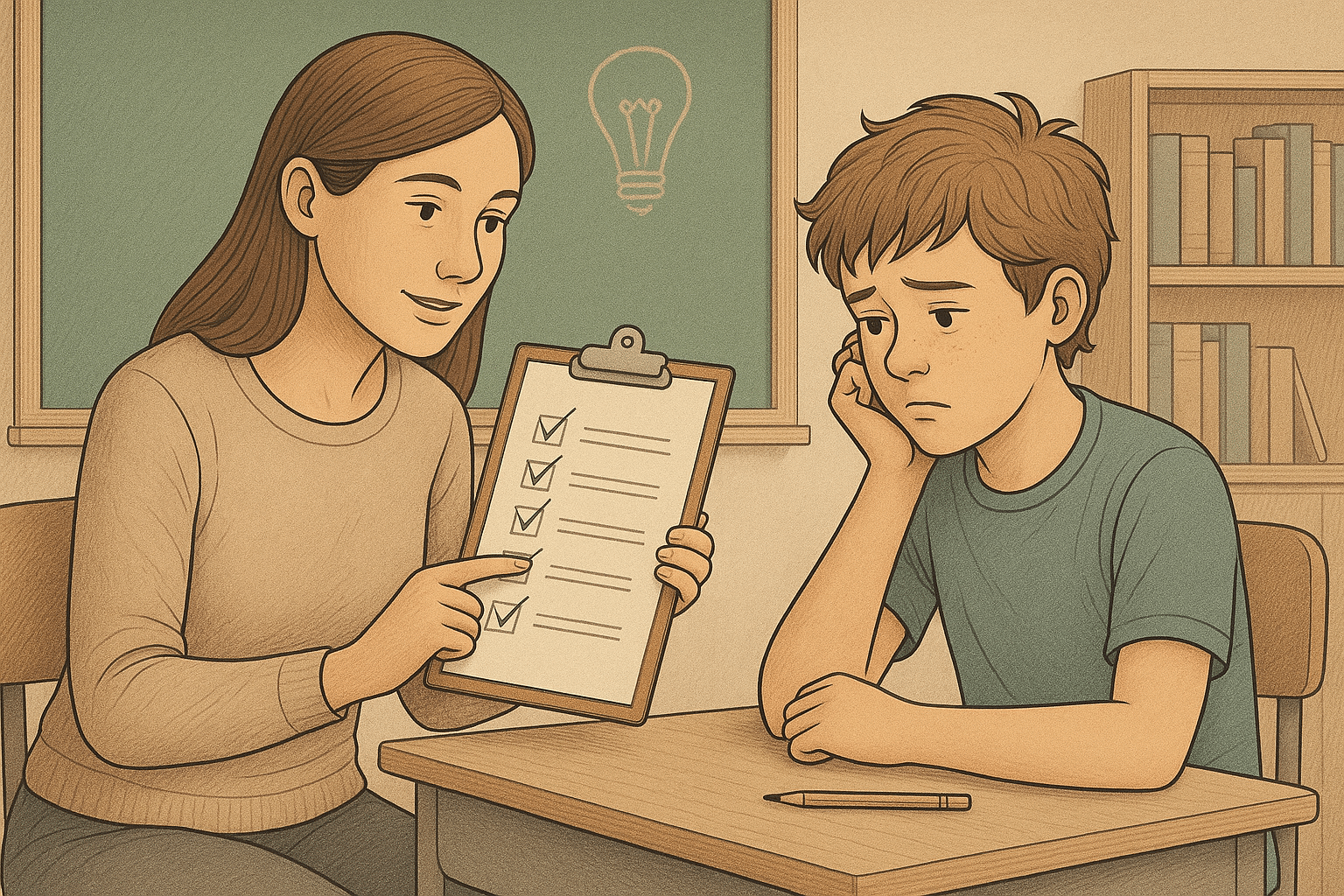
Checklists transform abstract tasks into concrete action items that students can physically track.
For younger students, include simple illustrations alongside written instructions.
For older students, teach them to create their own checklists as a self-regulation strategy that will serve them throughout their academic careers.
3. Incorporate Movement and Brain Breaks
Movement is essential for students with ADHD. Physical activity helps regulate the neurotransmitters that control attention and improves executive function.
Strategically incorporating movement throughout the school day isn’t indulging off-task behavior; it’s providing a biological necessity that enables better learning and behavior regulation.
Quick Movement Activities Between Lessons
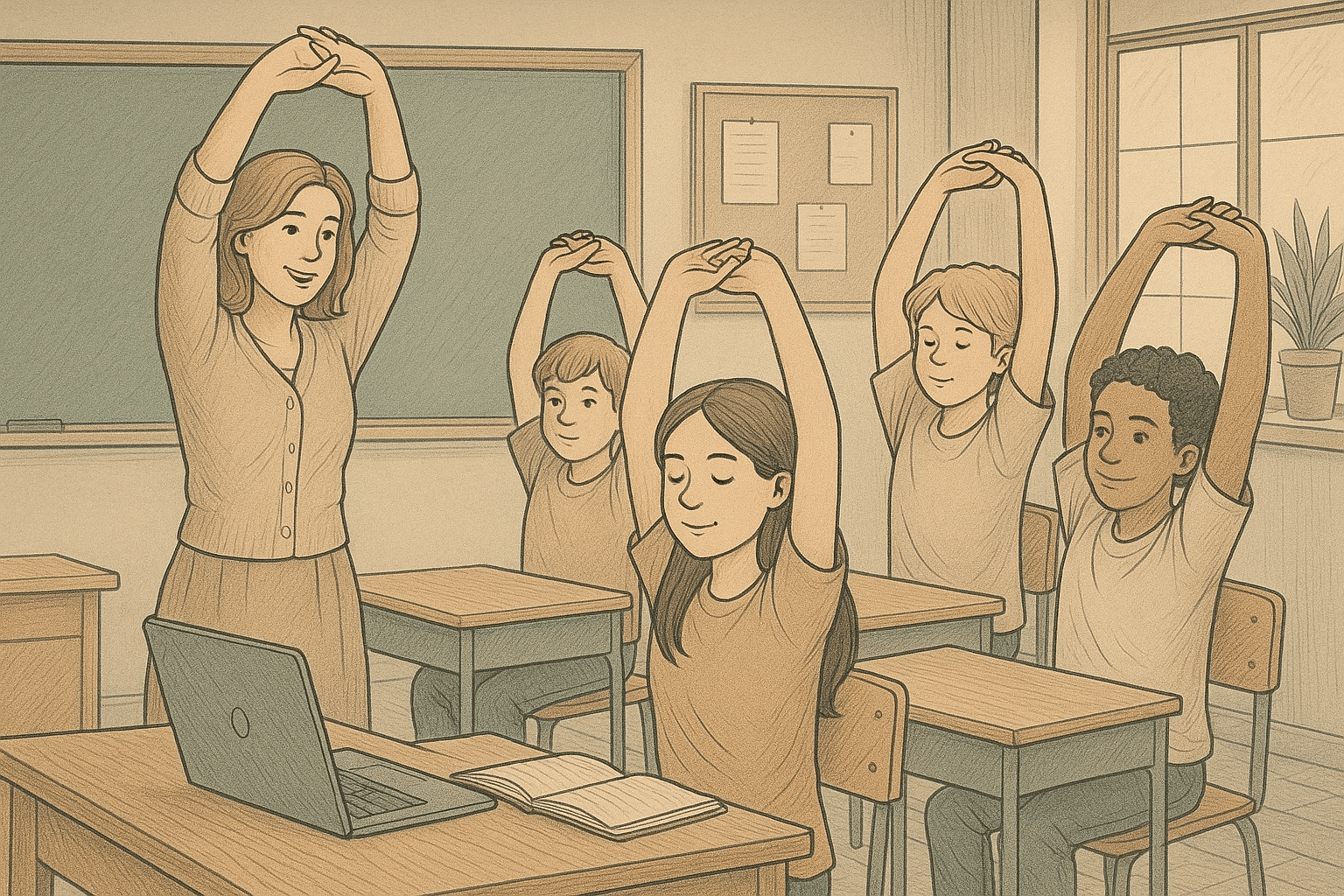
Integrate brief movement breaks between subject transitions to help students reset their attention.
Simple activities like stretching sequences, desk-side jumping jacks, or coordinated movements like “brain gym” exercises take just 2–3 minutes but can significantly improve subsequent focus.
These activities benefit all students but are particularly valuable for those with attention challenges.
Allowing Fidget Tools and Movement Options
Contrary to appearance, many students with ADHD focus better when their hands are busy or they can move subtly. Appropriate fidget tools (stress balls, fidget cubes, therapy putty) can actually improve attention by satisfying the sensory needs that might otherwise lead to more disruptive movements.
Establish clear guidelines for appropriate fidget tool use to ensure they enhance rather than detract from learning.
4. Use Multi-Sensory Teaching Techniques
Traditional lecture-based instruction relies heavily on auditory processing and sustained attention, precisely the areas where students with ADHD often struggle most.
Multi-sensory teaching engages multiple neural pathways simultaneously, creating more opportunities for information to register and be retained.
Visual Learning Supports
Visual supports benefit students with ADHD by externalizing information that would otherwise need to be held in working memory.
When key information, instructions, or processes are visually accessible, students can redirect themselves when attention wavers rather than missing content entirely.
Hands-On Learning Activities
Tactile experiences create stronger memory imprints for students with ADHD. Whenever possible, incorporate manipulatives, experiments, and physical models that allow students to literally get their hands on concepts.
Math concepts become clearer with counting objects, fraction tiles, or algebra blocks. Science concepts come alive through experiments rather than readings.
The heightened engagement these activities provide can trigger hyperfocus, a state where students with ADHD actually demonstrate exceptional concentration and productivity.
5. Provide Positive Reinforcement and Feedback
Students with ADHD typically receive significantly more negative feedback than their peers, at home, from peers, and in educational settings.
This disproportionate criticism can damage self-esteem and motivation. Intentionally increasing positive feedback counterbalances this experience and builds the confidence these students need to persist through challenges.
Celebrating Small Wins
Progress for students with ADHD often comes in smaller increments that might go unnoticed if you’re only looking for major achievements. So celebrate the small wins as this helps to motivate them more and boosts their confidence.
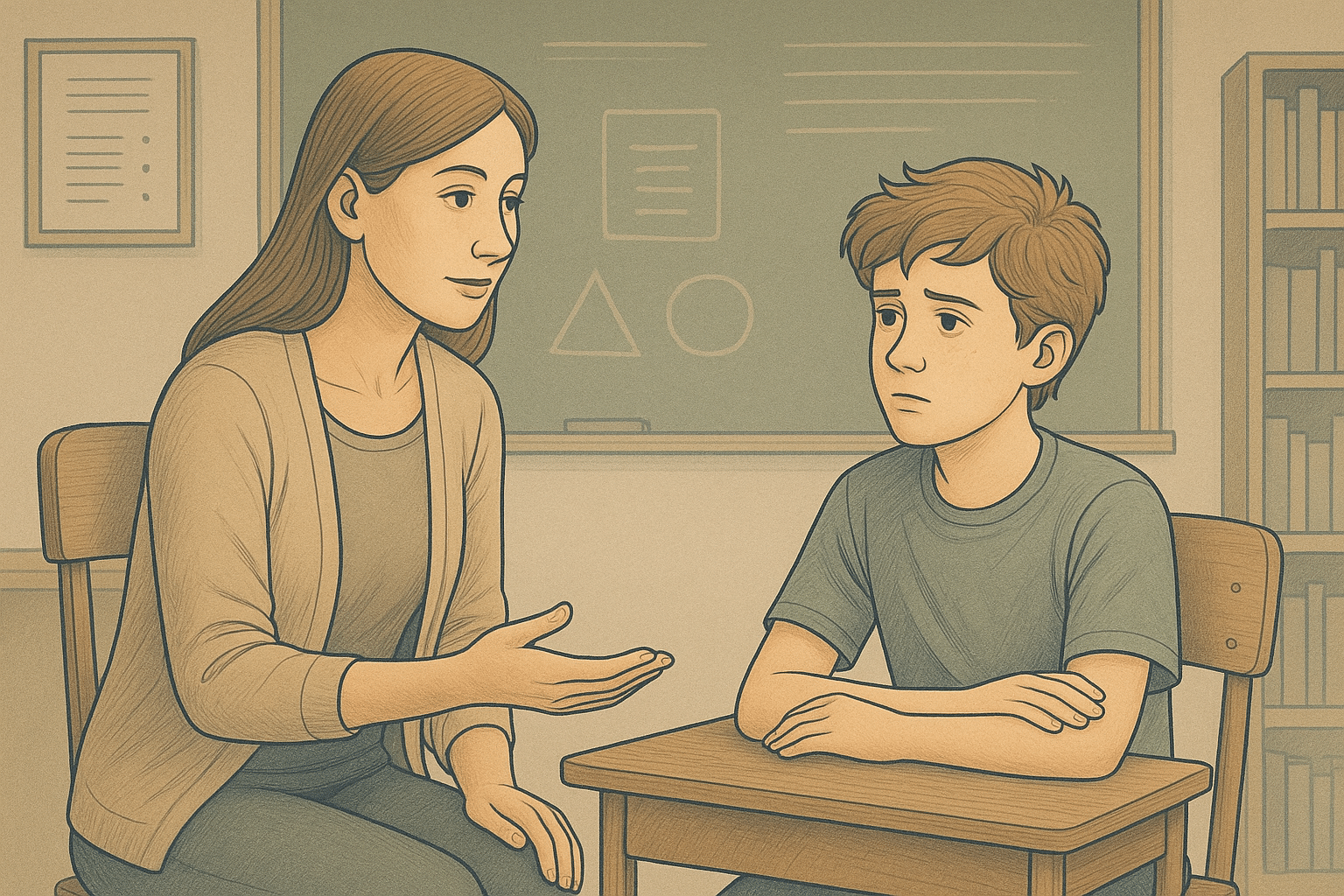
Take time to acknowledge and celebrate improvements in process, not just perfect outcomes.
For many students with ADHD, behaviors that come naturally to others, like staying in their seat, raising their hand, or completing work on time, may represent significant accomplishments that deserve recognition.
Private Correction Methods
When redirection is necessary, use methods that preserve student dignity and minimize disruption. Develop private signals with students that communicate “refocus” without calling attention to them in front of peers.
A gentle tap on the desk, a pre-arranged hand signal, or a sticky note can communicate needed redirection without embarrassment.
Empowering Student Success Through Comprehensive ADHD Support at Mission Prep
The five evidence-based strategies outlined provide teachers with powerful tools to support students with ADHD in the classroom. However, when classroom strategies alone aren’t enough to address the complex challenges that ADHD can present, comprehensive treatment becomes essential.
At Mission Prep Healthcare, we understand that teens with ADHD often face difficulties that extend beyond the classroom, impacting family relationships, social connections, and overall mental health. Our approach combines behavioral therapy, group counseling, and emotional regulation training in a supportive environment designed specifically for teens.

Mission Prep’s specialized residential treatment centers provide the intensive, structured support that students need to develop lasting coping skills.
Through comprehensive family involvement and evidence-based treatment modalities, we help adolescents learn to manage impulsivity, improve focus, and build the self-regulation skills necessary for academic and social success.
When teachers’ best efforts need additional reinforcement, Mission Prep provides the specialized care that helps teens with ADHD thrive both in and out of the classroom.
Frequently Asked Questions
What should I do when ADHD strategies disrupt other students?
Balance individual needs with classroom community by establishing clear parameters around accommodations. Most strategies can be implemented discreetly without drawing attention or disrupting learning.
Use these situations as opportunities to build classroom culture around different learning needs through age-appropriate discussions about learning differences. When accommodations are framed as tools that help everyone learn rather than special treatment, they become normalized within the classroom.
How often should I communicate with parents about their child’s ADHD progress?
Establish a communication schedule with regular updates without becoming overwhelming—weekly or bi-weekly check-ins work well, with more frequent communication during challenging periods.
Focus on patterns rather than reporting every incident, and always include positive observations alongside areas for growth. This consistent communication helps create a support network between home and school.
What’s the best way to handle homework assignments for students with ADHD?
Focus on quality over quantity by reducing volume while maintaining core practice objectives. Provide clear written instructions, estimated time frames, and checklists for multi-step assignments.
Teach students to break homework into timed intervals with brief breaks. If homework routinely causes significant stress or requires excessive parental involvement, make individualized adjustments that maintain educational benefit without creating family conflict.
When should families consider Mission Prep for teens with ADHD who need additional support?
Mission Prep’s treatment programs are beneficial when ADHD challenges go beyond what can be handled at home or in traditional school settings.
Consider our services if teens show severe impulsivity leading to unsafe behaviors, intense academic struggles affecting self-esteem, or family tensions straining relationships.
Our specialized programs offer immersive environments with behavioral therapy, group counseling, emotional regulation training, and comprehensive family support to help teens develop healthier coping skills and manage ADHD symptoms effectively.


